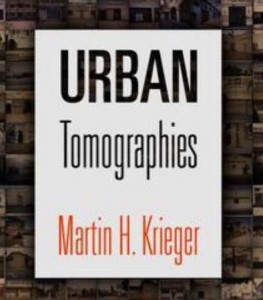Martin Krieger, USC – Urban Tomography
Photographs can surely capture a visual depiction of a city, but is that enough?
Martin Krieger, a professor of planning at The University of Southern California, discusses his urban tomography project.
Martin H. Krieger is professor of planning at the Sol Price School of Public Policy at the University of Southern California. He is trained as a physicist, and has taught in urban planning and policy at Berkeley, Minnesota, MIT, Michigan, and USC. His nine books are about mathematical modeling, environmental policy, and about theories of planning and design. He has been a fellow at the Center for Advanced Study in the Behavioral Sciences and at the National Humanities Center. He is a Fellow of the American Physical Society
Urban Tomography
![]()
 For cities before 1850, we only know about the urban sensorium, our experiences of sight, sound, smell, feel, from vivid descriptions and graphics. Nowadays, we can do better.
For cities before 1850, we only know about the urban sensorium, our experiences of sight, sound, smell, feel, from vivid descriptions and graphics. Nowadays, we can do better.
In the 1850s and 1860s Charles Marville photographed more than 500 streets of Paris, both before they were eviscerated and after they were rebuilt under Napoleon III’s orders with the direction of Baron Haussmann—creating the Paris we know today with its grand boulevards.
I learned from Marville that it is vital to make suites of images, much as are made in a CAT scan of your brain. Such tomography, the prefix tomo is the Latin for a slice, as in a horizontal slice of the brain, allows one to see in multiple dimensions.
In our case, the dimensions are time and variations within a subject matter. You want to achieve a general sense that would include those manifold slice.
In Los Angeles, I have photographed the facades of 800+ storefront houses of worship, people at work at 225 industrial sites including at the Ports of Los Angeles and Long Beach and at the iconic County-USC hospital, and all the electrical power stations of the Department of Water and Power. And we have recorded the sounds of Los Angeles in high-quality calibrated surround sound.
We have also rephotographed the sites Marville photographed in Paris but now 135 years later, to compare then and now.
Google Street View and social media are wonderful but also quite partial. You have to go out and be there and look and make your own photographs.
Our work is meant to create a living present for the future. Systematic, indexed, and archived documentation captures a legacy that will remain for future generations to study and enjoy.



